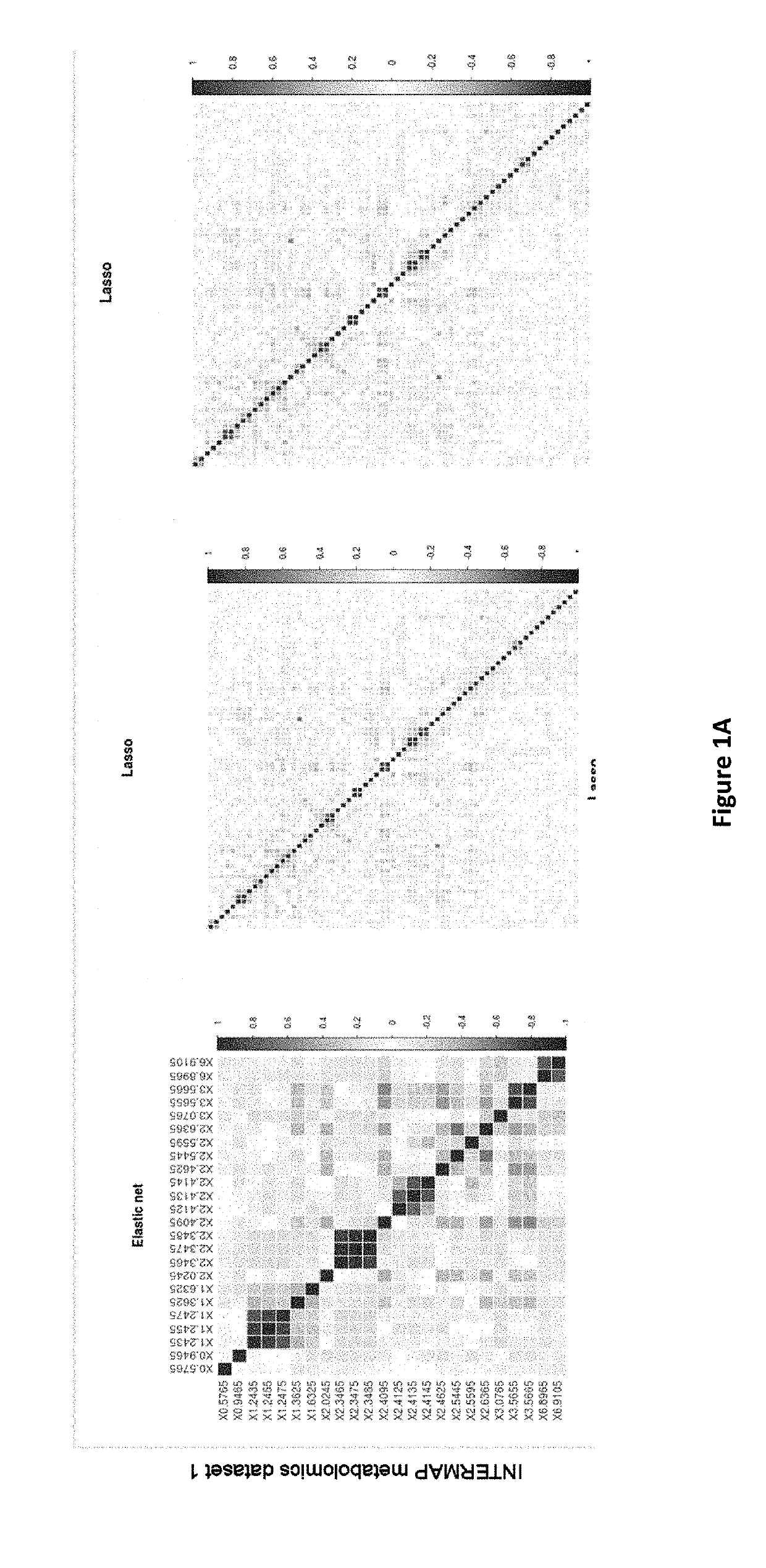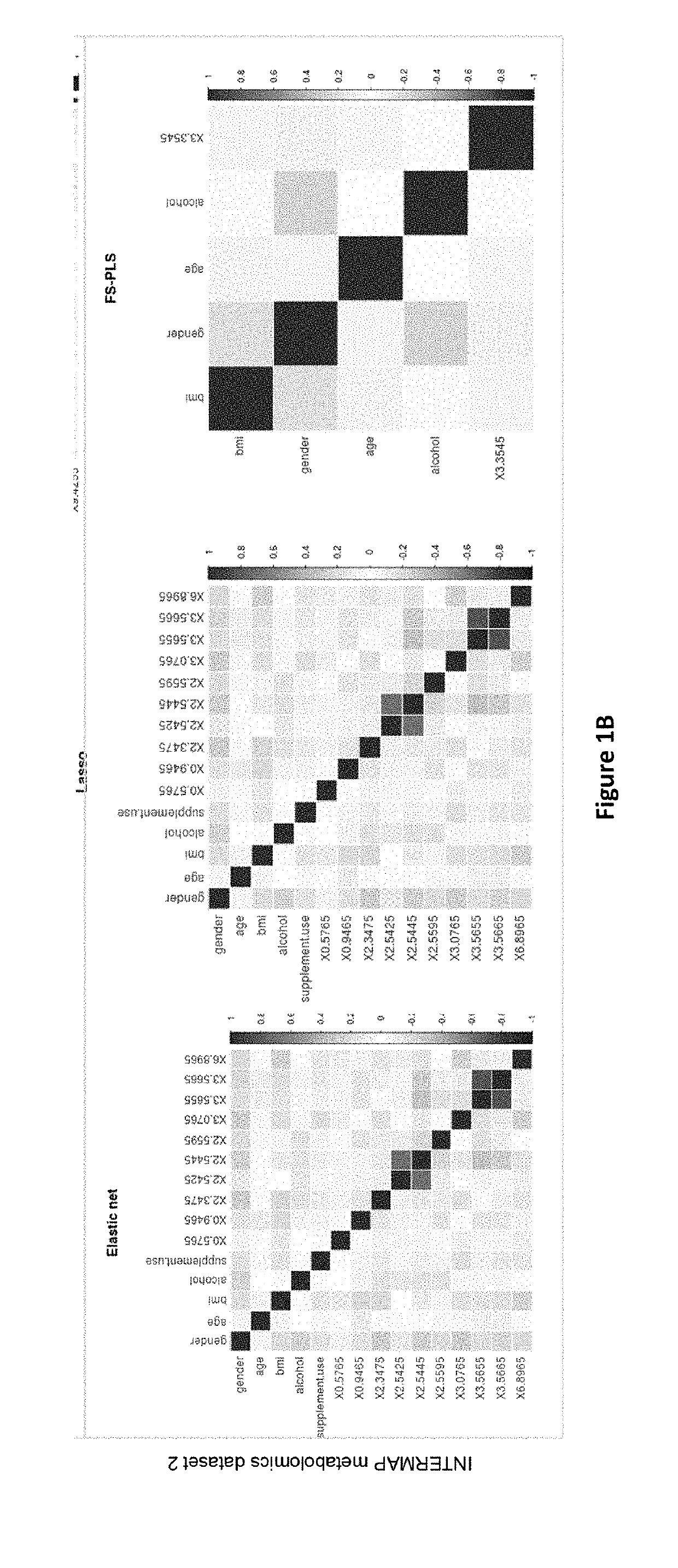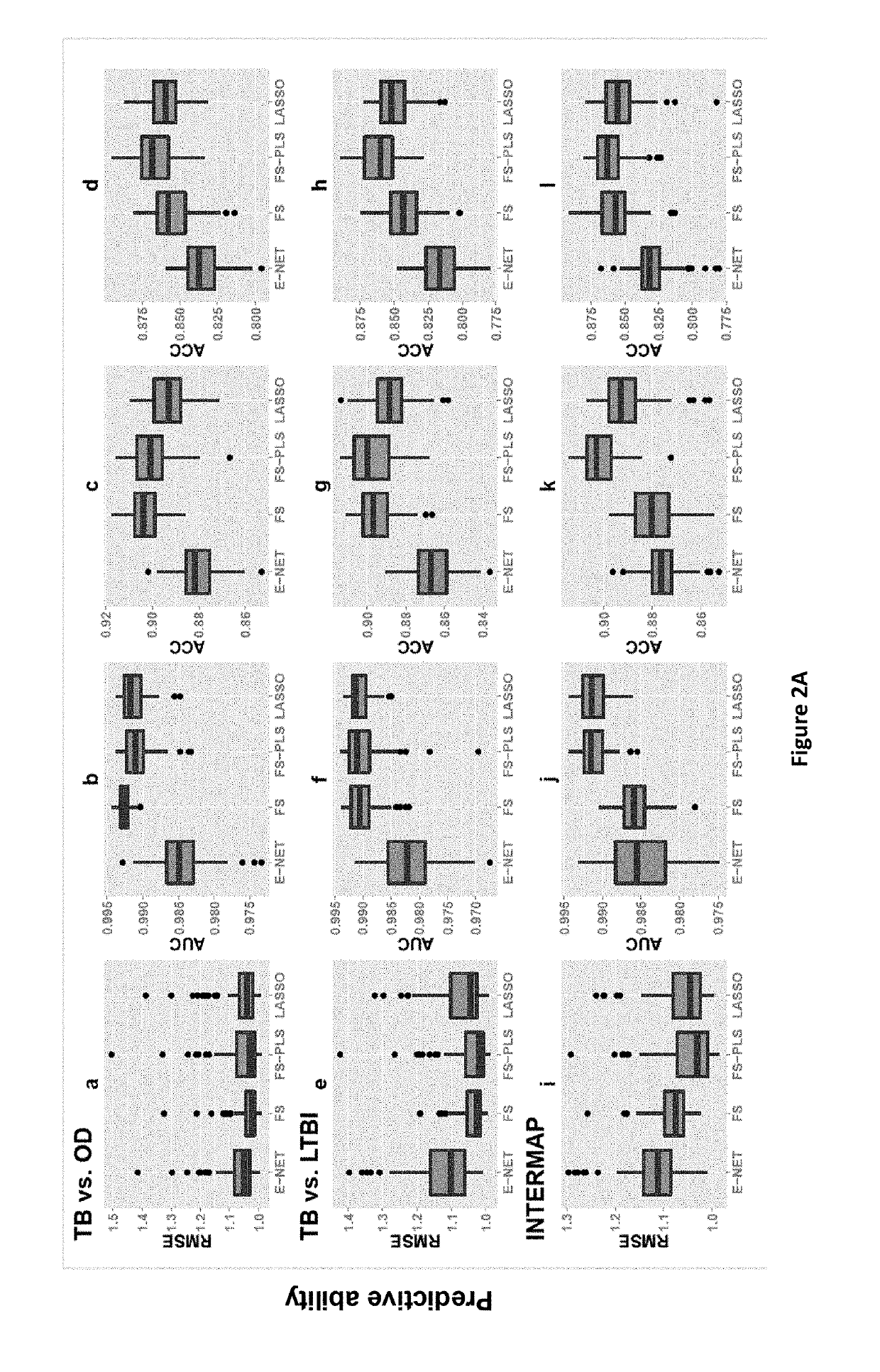Method of Detecting Active Tuberculosis Using Minimal Gene Signature
a gene signature and active tuberculosis technology, applied in the field of detecting active tuberculosis using minimal gene signature, can solve the problems of antibiotic resistance, difficult treatment, and long course of multiple antibiotics, and achieve the effect of reducing the number of genes and sensitivity/specificity
- Summary
- Abstract
- Description
- Claims
- Application Information
AI Technical Summary
Benefits of technology
Problems solved by technology
Method used
Image
Examples
example 1
nt of Forward Selection—Partial Least Squares (FS-PLS) Method
Overview of Biomarker Selection Methods in 'Omics Datasets
[0249]Conventional methods for variable selection and model building, as applied to omics data, fall broadly into three categories. A comprehensive review on the methodological challenges behind omics-based biomarker selection is given by Hyam and colleagues (2) but for the scope of this paper, we provide a brief description of methodologies with their relative strengths and limitations.
[0250](A) Univariate Variable Selection Followed by Model Fitting.
[0251]These methods first rank the variables by applying a univariate test statistic. (ie t-test, Cochran-Armitage test) The top ranked variables are then selected based on a threshold and model fitting is achieved using a machine learning classification method (ie. support vector machines (3), decision trees (4) and Maximum Likelihood Discriminant analysis such as Linear Discriminant Analysis and Diagonal Linear Discr...
example 2
FS-PLS Method to Original 44 and 27 Gene Signatures for Detecting Active TB Test Subjects and Validation Datasets
[0288]The samples and validation datasets used in this Example are the same as those described in Kaforou et al (26) and in the present inventors' previously filed application WO2014 / 019977.
Minimal Gene Signatures
[0289]In order to further reduce the number of genes in the original 27 and 44 gene signatures, Forward Selection—Partial Least Squares (FS-PLS) as described in Example 1 was applied to previously obtained gene expression data from Kaforou et al.
[0290]The first iteration of the FS-PLS algorithm considers the expression levels of all transcripts (N) and initially fits N univariate regression models. The regression coefficient for each model is estimated using the Maximum Likelihood Estimation (MLE) function, and the goodness of fit is assessed by means of a t-test. The variable with the highest MLE and smallest p-value is selected first (SV1). Before selecting whi...
PUM
| Property | Measurement | Unit |
|---|---|---|
| temperature | aaaaa | aaaaa |
| temperature | aaaaa | aaaaa |
| OD | aaaaa | aaaaa |
Abstract
Description
Claims
Application Information
 Login to View More
Login to View More - R&D
- Intellectual Property
- Life Sciences
- Materials
- Tech Scout
- Unparalleled Data Quality
- Higher Quality Content
- 60% Fewer Hallucinations
Browse by: Latest US Patents, China's latest patents, Technical Efficacy Thesaurus, Application Domain, Technology Topic, Popular Technical Reports.
© 2025 PatSnap. All rights reserved.Legal|Privacy policy|Modern Slavery Act Transparency Statement|Sitemap|About US| Contact US: help@patsnap.com



